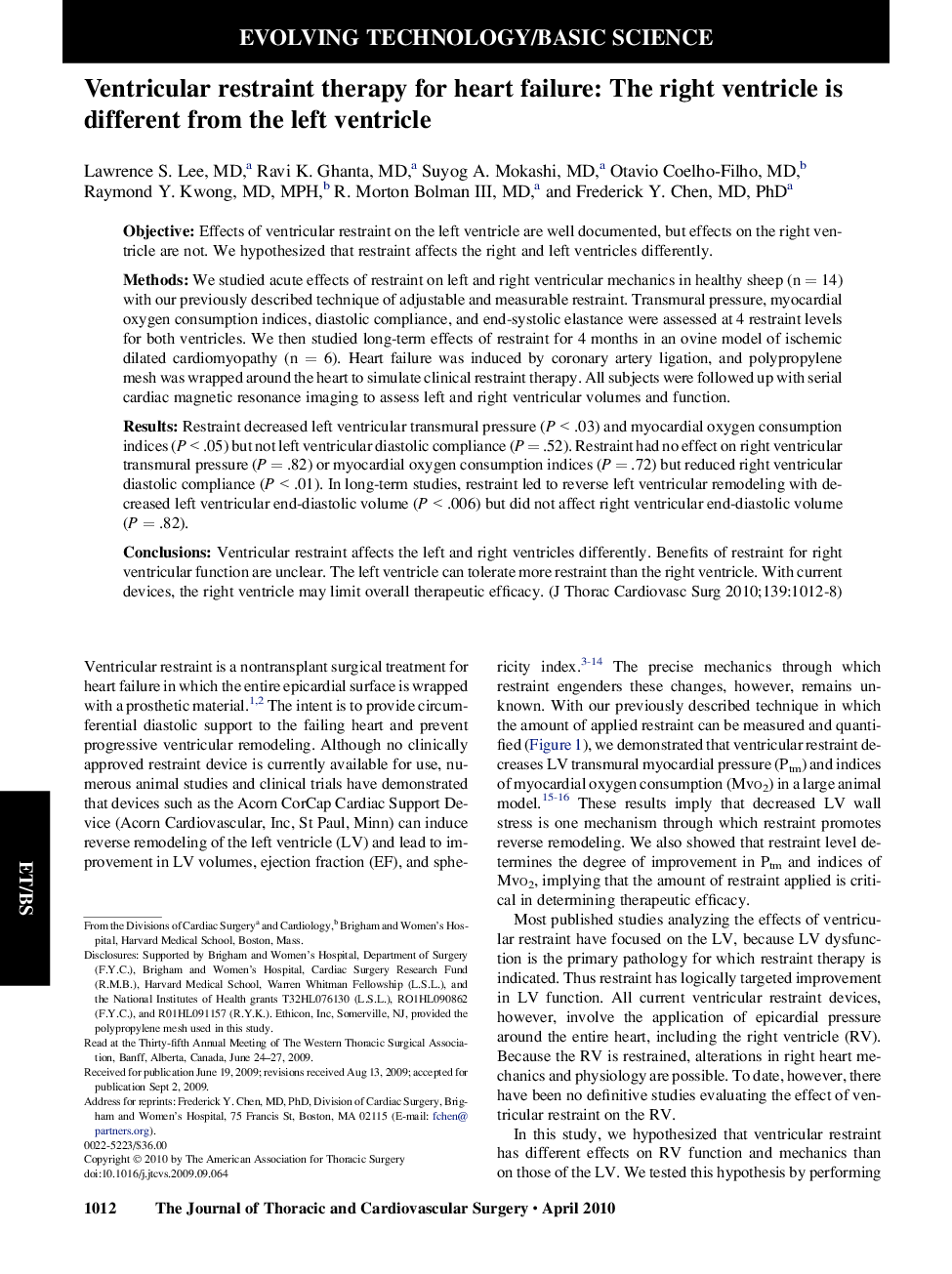| کد مقاله | کد نشریه | سال انتشار | مقاله انگلیسی | نسخه تمام متن |
|---|---|---|---|---|
| 2984466 | 1578663 | 2010 | 7 صفحه PDF | دانلود رایگان |

ObjectiveEffects of ventricular restraint on the left ventricle are well documented, but effects on the right ventricle are not. We hypothesized that restraint affects the right and left ventricles differently.MethodsWe studied acute effects of restraint on left and right ventricular mechanics in healthy sheep (n = 14) with our previously described technique of adjustable and measurable restraint. Transmural pressure, myocardial oxygen consumption indices, diastolic compliance, and end-systolic elastance were assessed at 4 restraint levels for both ventricles. We then studied long-term effects of restraint for 4 months in an ovine model of ischemic dilated cardiomyopathy (n = 6). Heart failure was induced by coronary artery ligation, and polypropylene mesh was wrapped around the heart to simulate clinical restraint therapy. All subjects were followed up with serial cardiac magnetic resonance imaging to assess left and right ventricular volumes and function.ResultsRestraint decreased left ventricular transmural pressure (P < .03) and myocardial oxygen consumption indices (P < .05) but not left ventricular diastolic compliance (P = .52). Restraint had no effect on right ventricular transmural pressure (P = .82) or myocardial oxygen consumption indices (P = .72) but reduced right ventricular diastolic compliance (P < .01). In long-term studies, restraint led to reverse left ventricular remodeling with decreased left ventricular end-diastolic volume (P < .006) but did not affect right ventricular end-diastolic volume (P = .82).ConclusionsVentricular restraint affects the left and right ventricles differently. Benefits of restraint for right ventricular function are unclear. The left ventricle can tolerate more restraint than the right ventricle. With current devices, the right ventricle may limit overall therapeutic efficacy.
Journal: The Journal of Thoracic and Cardiovascular Surgery - Volume 139, Issue 4, April 2010, Pages 1012–1018